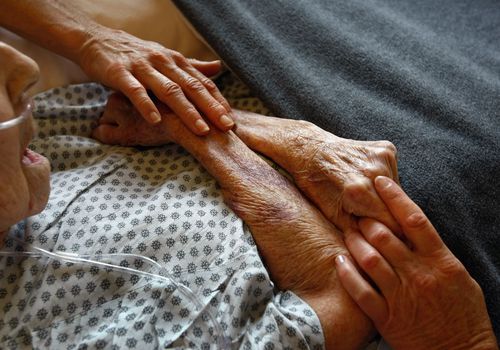CARING FOR A PERSON LIVING WITH STROKE AT HOME- HOW TO POSITION A STROKE SURVIVOR
 Ad Adams Ebenezer is a co-founder of the Stroke Association Supportnetwork (SASNET) Ghana. He is also a board of director of the World Stroke Organization.
Ad Adams Ebenezer is a co-founder of the Stroke Association Supportnetwork (SASNET) Ghana. He is also a board of director of the World Stroke Organization.
Adams has been actively involved in the testing and launching of the Post Discharge Stroke Support (PDSS) around the world, collaborating with teams from South Africa and the United States.

HOW TO POSITION A STROKE SURVIVOR
When stroke survivors sit or lie down in the right way, it can help them recover faster and function better. Sitting or lying in incorrect positions may worsen problems such as stiffness, pain or interfere with awareness of the weak side.
HOW SHOULD THE PERSON LIE IN BED?
General guidelines:
- Use a firm mattress (not too soft, not too hard), or place a wooden board such as an old door under the mattress.
- The wall should always be on the person’s strong side.
- The person should lie with the weak side of the body towards the door, TV, visitor’s chair and so This will help him/her not to forget or ignore the weak side.
- The person should spend as little time as possible in bed.
- When in bed, the person should lie on his/her sides instead of on the back.
- Turn someone who cannot move at all every two to three hours to prevent stiffness and bedsores.
How to sit up and lie on both sides(only if the person cannot get out of bed)
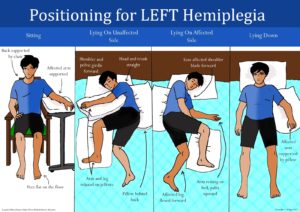
- Keep the elbow away from the body and in comfortable position.
- Keep the weak hand open, with nothing in it. lying on the strong side, put something under the weak elbow and hand to support it.
- When lying on the weak side, don’t let the person lie on the shoulder joint. Place the shoulder in front of the chest and not under the body.
- the upper knee.
- pillows or a folded blanket under the upper knee and foot so that it is fully supported.
- If the bed is not wide enough, let the weak hand and arm rest on a box or table next to the bed. Check that the box or table is just as high as the bed not lower or higher.
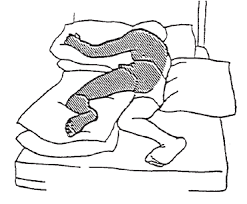
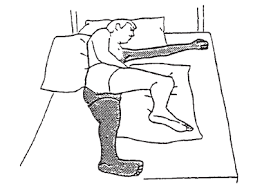
1 .The person may lie on his/ her back only for a short time only.
2.Put the bedside table on the weak side.
3.Let the person sit up straight with legs stretched out in front.
If you put a pillow under the knees it may be more comfortable.
4. The back should be against the wall or headboard.
If the person cannot be moved closer to the upper part of the bed,
place a chair or stool between him/her and the headboard.
5.Put pillows or a folded blanket behind the back as support
6.Make a lap table from a box , on which the arms can rest.
The person should only sit like this if he/she cannot get out of bed.
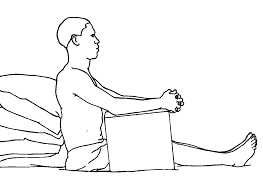

Important message for carers and care providers
Don’t let the person lie in bed with a stack of pillows stuffed behind him/her back. This may cause the following:
- Bedsores.
- Breathing problems.
- Problems with swallowing.
- More stiffness in the arm and leg.
- A bent spine and forward head position.
E.S, S., & J.S, V. (2015). Stroke Care at Home. Western Cape South Africa: Center for Rehabilitation Studies Stellenbosch University.
IMPORTANT : Person living with stroke and their carers could also receive answers to the above stated problems by signing up to the Post Discharge Stroke Support(PDSS) Program by the Stroke Association Supportnetwork-Ghana (SASNET-GHANA).
http://:care.sasnetghana.org online or email: info@sasnetghana.org
Helpline + 233594989496 or on WhatsApp +233262463986
Sign up to Ask Dr Charway –Felli Platform for more support .
Register for free support online here : care.sasnetghana.org/ask-charway/


